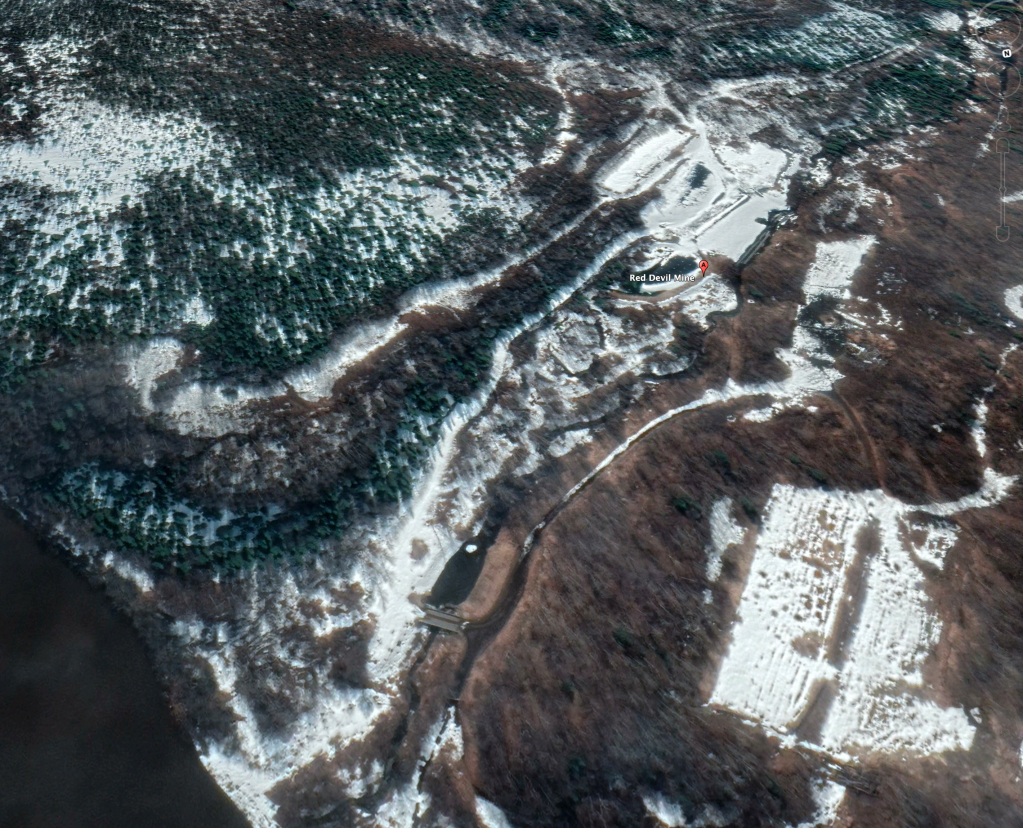
The Red Devil Mercury Mine was intermittently active between 1933 and 1971. It’s located along the southerly bank of the Kuskokwim River in southwestern Alaska, between the villages of Sleetmute and Red Devil.

The mine produced roughly 35,000 flasks of mercury (at roughly 76 pounds per flask). At the current value of US $1,100 per flask, that’s total gross value of a little over $38 million.
Today, the Red Devil Mercury Mine is a Superfund site, badly contaminated with very high levels of heavy metals, including mercury, antimony and arsenic. In May 2022, the U.S. Bureau of Land Management issued its Record of Decision on the best affordable methodology and estimated cost of cleaning up Red Devil Mine. It cost $4 million just to perform the environmental studies. The immediate cost of remediation is estimated at $31 million. And $8.8 million annually to monitor and maintain the remediation the site in perpetuity.
Obviously, the cost of remediating the contamination exceeds even the gross value of the minerals produced.
The series of thinly capitalized mining companies that operated Red Devil Mine over the decades have long since vanished. The taxpayers, you and WC, get to pay the cost of cleaning up the heavy metal ghastliness.
The best site remediation that the BLM can afford is to collect all the contaminated materials – overburden, mine waste, surface materials around the former kiln, creek and river sediments – and mix it with cement and bury it in a hole up the hillside. All 210,000 cubic yards of it. The lithified waste would be capped with a geotextile fabric and impervious soils. Monitoring wells would be drilled around the buried materials. That doesn’t solve all of the problems; there are extensive surface mining excavations that may continue to leach heavy metals into the surrounding water and soils. Those will be monitored as well.
A really effective solution may not exist. The contaminated groundwater, in particular, is difficult to impossible to remediate with current technologies. A more effective solution, that better addressed the surface mining scars, would cost as much as $200 million.
Even after it’s all done, you couldn’t pay WC enough to eat a single blueberry growing on Barometer Mountain.
As bad as Red Devil Mine is, in the giant scheme of things, it doesn’t even make the Top 100 Superfund sites. BLM has estimated that the 22,500 abandoned mines across Alaska and the West will cost $310 billion to remediate, a number that the Congressional Budget Office described as “laughably low.”
WC has long advocated for amendments to the Mining Law of 1872 that would impose an overriding royalty interest on all mines on federal land, with the revenues to be used for mitigation of all those abandoned mines. And to create a reserve to fund the catastrophes currently being created. But it’s impossible to even think of the current Congress doing something that sensible.
There no word on when or where BLM will find the financial resources to start the remediation of Red Devil Mercury Mine. Don’t hold you breath for it to happen soon; hypoxia is bad for you.


The 2023 interest payment on the National Debt was reported to be $659 Billion. 2024 is projected to be $1 Trillion +. Just the Interest!
LikeLiked by 1 person